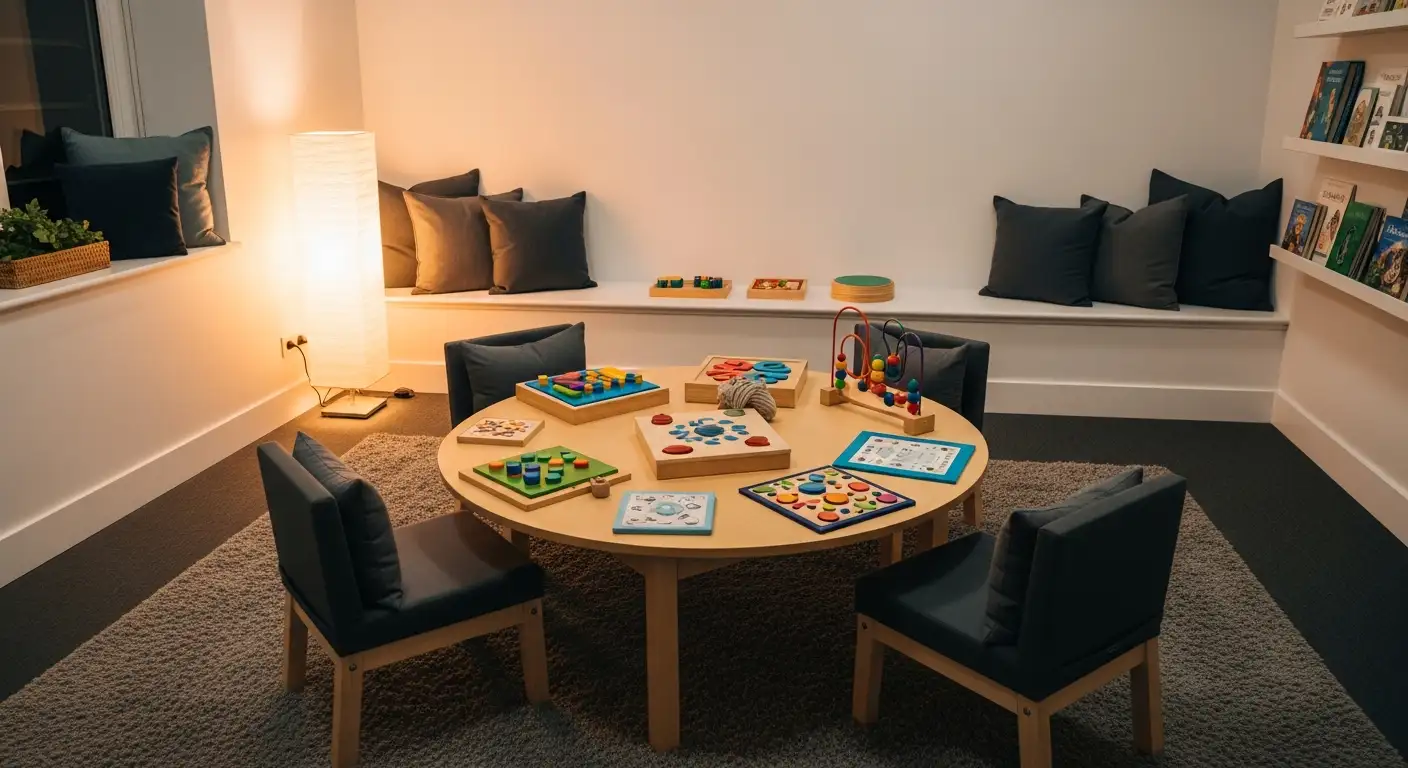Understanding the Power of Eye Contact in Therapy
Eye contact is a fundamental aspect of nonverbal communication, playing a crucial role in establishing connection, trust, and understanding in therapy sessions. While it appears simple, many clients find maintaining eye contact challenging due to discomfort, anxiety, or cultural differences. This article explores effective strategies for increasing eye contact in therapy, highlighting techniques for therapists and clients to foster better communication and build stronger therapeutic rapport.
Foundations of Effective Nonverbal Communication
What are effective methods to enhance nonverbal communication, including eye contact?
Improving nonverbal communication involves paying close attention to body language cues, facial expressions, tone of voice, and overall demeanor. These elements work together to convey emotions and messages clearly.
Maintaining an appropriate level of eye contact is crucial. It signals interest and attentiveness without overwhelming the other person. A good rule of thumb is the 50/70 rule: making eye contact about 50% of the time when speaking and 70% when listening. Looking into the eyes for about 4–5 seconds at a time, then slowly looking away, helps create a balanced connection.
Open, relaxed postures and facial expressions make others feel comfortable and encourage reciprocation. For example, smiling gently and leaning slightly forward can foster trust and friendliness. Using the triangle technique—gazing between a person's eyes and mouth—allows for comfortable eye contact without feel overly intense.
Interpreting signals holistically means considering all cues together: a smile combined with relaxed posture may indicate friendliness, even if the verbal message seems reserved. It's also helpful to seek feedback from trusted individuals or practice in less stressful situations, like with friends or family, to increase confidence.
Utilizing active listening cues—like nodding, verbal affirmations, and leaning in—also enhances overall communication and demonstrates genuine engagement. These behaviors complement eye contact and reinforce attentiveness.
In therapy settings, nonverbal techniques such as facial mimicry and head-nodding promote empathy and rapport, especially when provided intentionally by virtual or in-person therapists. Practicing these gestures consistently can gradually build comfort and improve interpersonal connections.
In summary, effective nonverbal communication relies on a combination of eye contact, attentive body language, facial expressions, and the careful interpretation of signals within the broader context of the conversation. Developing these skills takes patience, practice, and self-awareness.
Activities and Exercises to Promote Eye Contact and Social Engagement
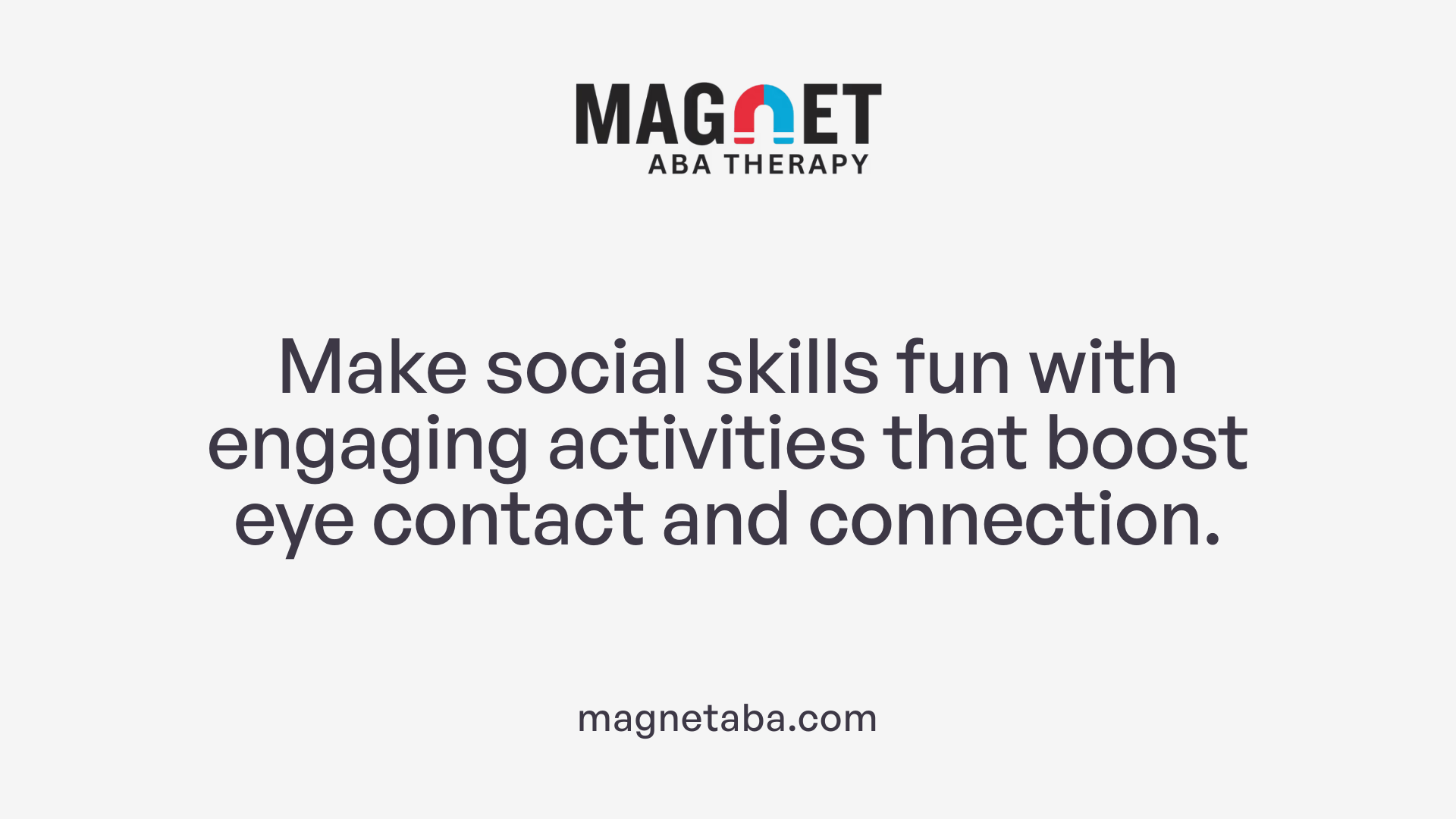
What are some activities that can increase eye contact and social engagement?
Engaging in targeted activities can help individuals improve their ability to maintain eye contact and become more socially connected. Interactive games are particularly effective because they make practicing eye contact fun and engaging.
For example, "Staring Competition" encourages participants to hold eye contact for a set duration without blinking. This playful challenge helps build comfort and focus during social interactions. "Pass the Smile" involves passing smiles between participants and making eye contact, enhancing nonverbal communication awareness.
Another game is "Robber Winking," where players try to catch each other's eye with a wink, fostering alertness to facial cues. Face painting and drawing eyes on templates serve as visual aids, helping children recognize facial expressions and understand where to focus their gaze.
Virtual social activities, such as video chats and scenario-based practice cards, create opportunities to develop eye contact skills digitally. These activities simulate real-world interactions, making them especially useful during remote learning or therapy sessions.
Structured social exercises like role-playing and imitation games also promote understanding of social cues. For instance, "Pairs Mirror" involves partners mimicking each other's facial expressions and eye movements, strengthening awareness and responsiveness.
In summary, a variety of activities—ranging from playful games to structured exercises—can effectively increase eye contact and social engagement. Including both in-person and virtual options ensures accessibility and engagement for different needs and ages.
Practical Strategies for Developing Better Eye Contact Skills
What strategies can help individuals develop better eye contact skills?
Improving eye contact is a gradual process that can significantly enhance social interactions and communication confidence. One effective approach begins with practicing in familiar, less intimidating environments, such as with friends, family members, or even characters on TV. This allows individuals to become more comfortable without the pressure of a formal setting.
Using specific techniques like the triangle method—where you look at one eye, then the other, then the nose or forehead—can make eye contact feel more natural. Aiming to maintain eye contact for about 4 to 5 seconds at a time also helps to establish a rhythm. Applying the 50/70 rule—maintaining eye contact about 50-70% of the time during a conversation—can foster engagement without feeling overwhelming.
Interesting visual aids, such as using colored cues (green for eye contact and red for looking away), can help children and beginners understand and meet expectations more easily. When feeling anxious, deep breathing exercises and mental rehearsals serve as calming tools.
Consistent practice is essential; seeking feedback from trusted individuals or observing skilled communicators can help identify areas for improvement. Over time, these strategies build comfort and confidence, enabling individuals to maintain effective eye contact. Remember, it’s perfectly okay to look near the eyes, like the bridge of the nose or forehead, especially if direct eye contact becomes too stressful. With patience and persistence, anyone can develop this essential social skill.
Overcoming Anxiety Around Eye Contact
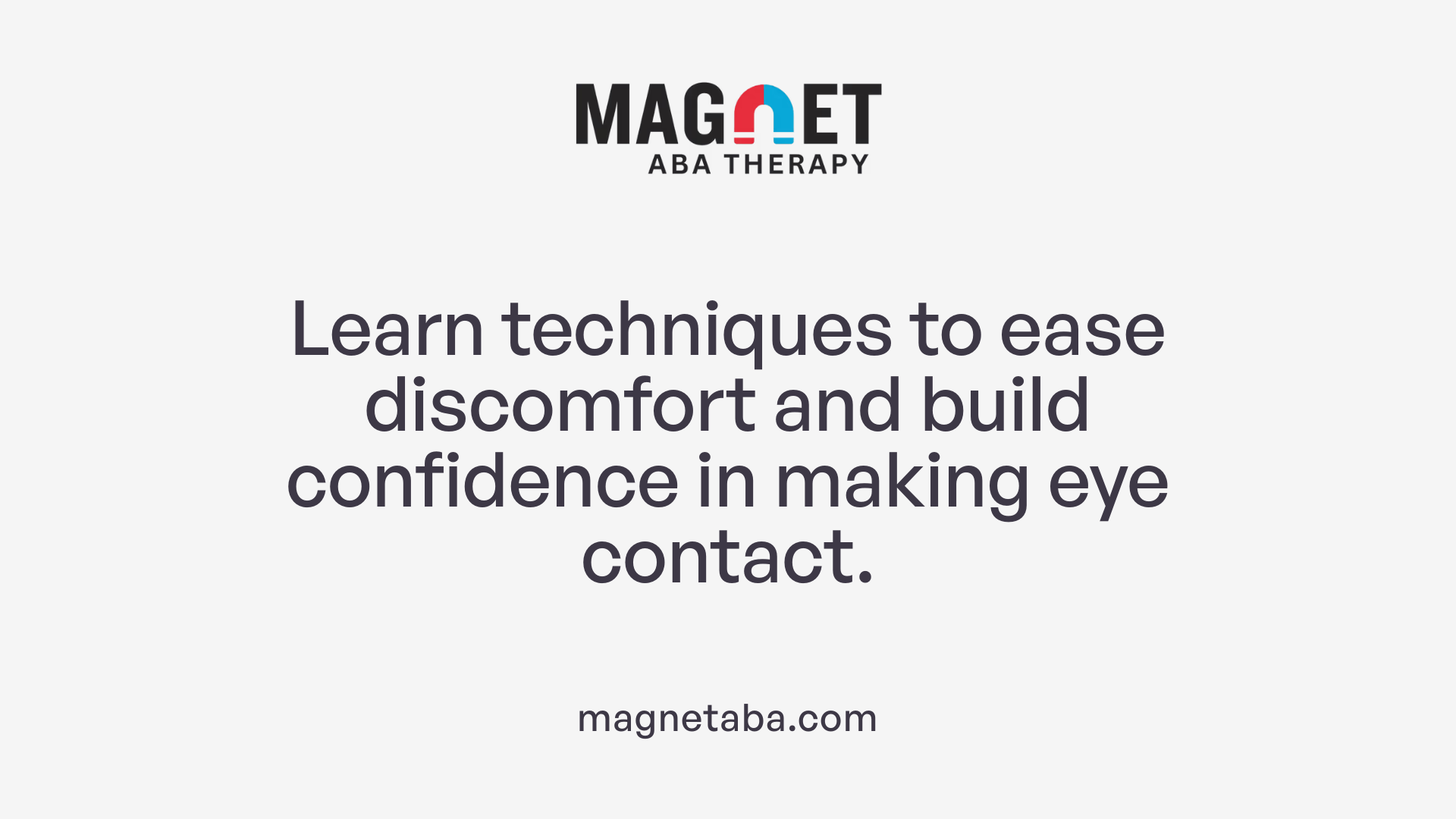 Many individuals find eye contact to be a source of discomfort or anxiety, especially those with social anxiety, mood disorders, or on the autism spectrum. Understanding how to gradually overcome this challenge can vastly improve personal and professional interactions.
Many individuals find eye contact to be a source of discomfort or anxiety, especially those with social anxiety, mood disorders, or on the autism spectrum. Understanding how to gradually overcome this challenge can vastly improve personal and professional interactions.
Gradual exposure is an effective method. Starting with less stressful situations, such as practicing eye contact with trusted friends or even characters on TV, can build confidence over time. Setting small, achievable goals, like maintaining eye contact for 3 to 5 seconds before slowly looking away, helps ease the process.
Relaxation techniques play a vital role. Deep breathing, for example, helps calm nerves before or during eye contact. Focusing attention on a visual anchor—like the bridge of the nose or forehead—can make eye contact feel less intense while still signaling engagement.
Using visual anchors, such as focusing on a specific facial feature, helps maintain comfortable eye contact without feeling overwhelmed. Employing tools like the Eye Communication Training Device (ECOM) in therapy sessions offers structured graded exposure, providing verbal feedback and supporting gradual desensitization.
In addition to behavioral strategies, therapy options such as cognitive-behavioral therapy (CBT) can target underlying anxieties and teach attention-shifting or mindfulness. Medications like paroxetine may be prescribed to reduce baseline anxiety levels, making it easier to practice eye contact.
Throughout the process, reinforcing successes with positive feedback and setting clear expectations can bolster confidence. Combining these approaches—gradual exposure, relaxation techniques, visual anchors, and professional support—can lead to more comfortable and natural eye contact over time.
Enhancing Therapist-Client Interactions Through Effective Eye Contact
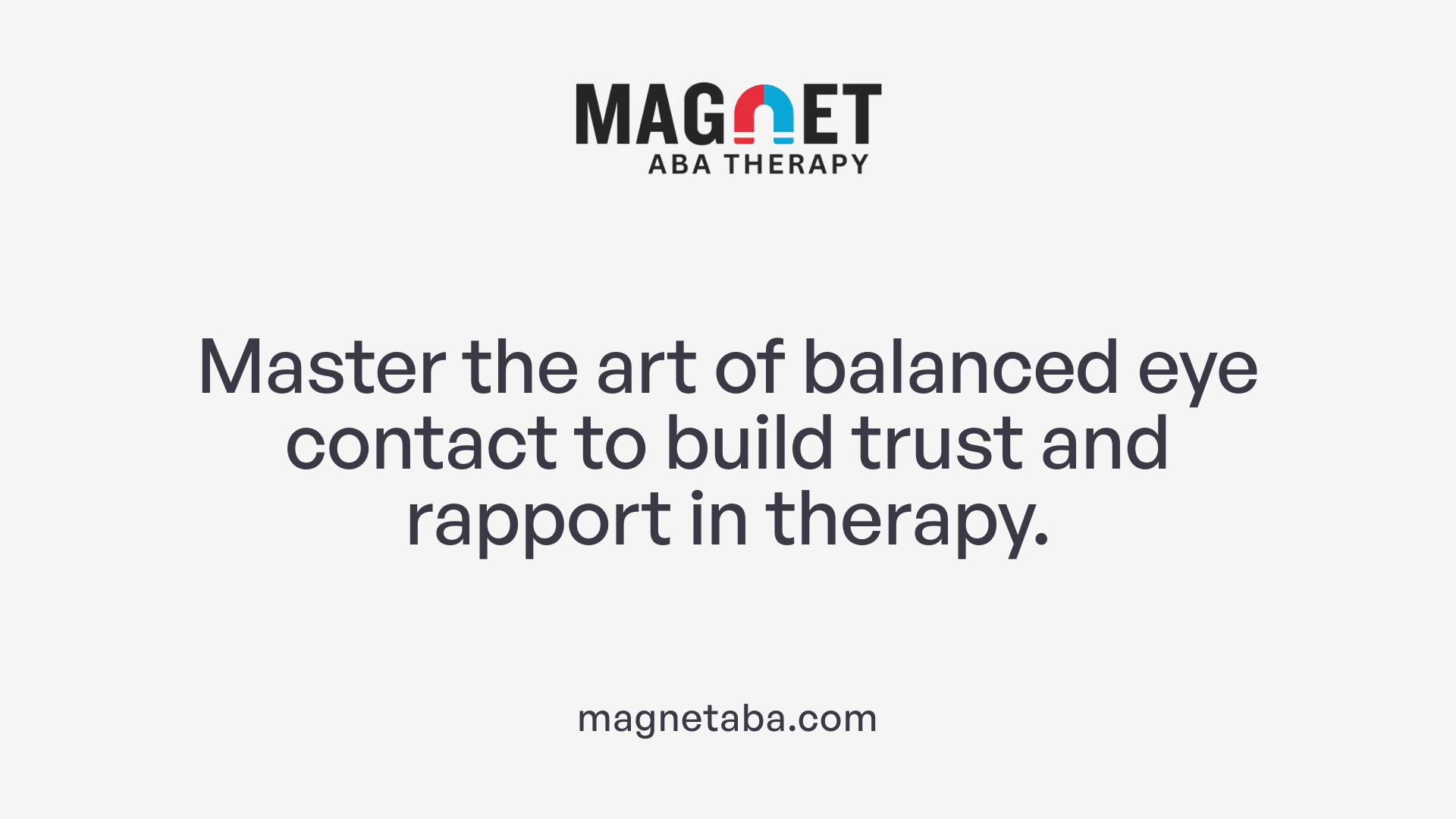
How can therapists improve their ability to maintain effective eye contact with clients?
Therapists play a critical role in creating a trusting and comfortable environment during therapy sessions. To improve their use of eye contact, they must first understand and respect the unique cultural and personal differences that influence a client’s comfort level with eye contact. Some cultural backgrounds view direct eye contact as respectful, while others may find it intrusive or uncomfortable.
Establishing a safe, non-judgmental space is essential. This environment encourages clients to gradually become more comfortable with sustained eye contact. Therapists can practice active listening cues, such as balancing eye contact with other nonverbal signals like nodding and verbal affirmations, which demonstrate engagement without overwhelming the client.
It is also beneficial for therapists to explore and discuss clients’ beliefs and past experiences related to eye contact. For clients who have experienced trauma, social anxiety, or attachment issues, these conversations help address underlying causes of discomfort.
Patience is vital in this process. Some clients may need more time and gentle encouragement to build confidence in maintaining eye contact.
Additionally, therapists can incorporate strategies like practicing with trusted colleagues, observing cultural norms, and seeking feedback from clients around their comfort levels. This personalized approach helps foster rapport and trust.
Over time, consistent sensitivity and adjustments deepen the therapeutic alliance, making eye contact a natural and supportive aspect of therapy that enhances communication and connection.
Best Practices for Fostering Eye Contact During Therapy
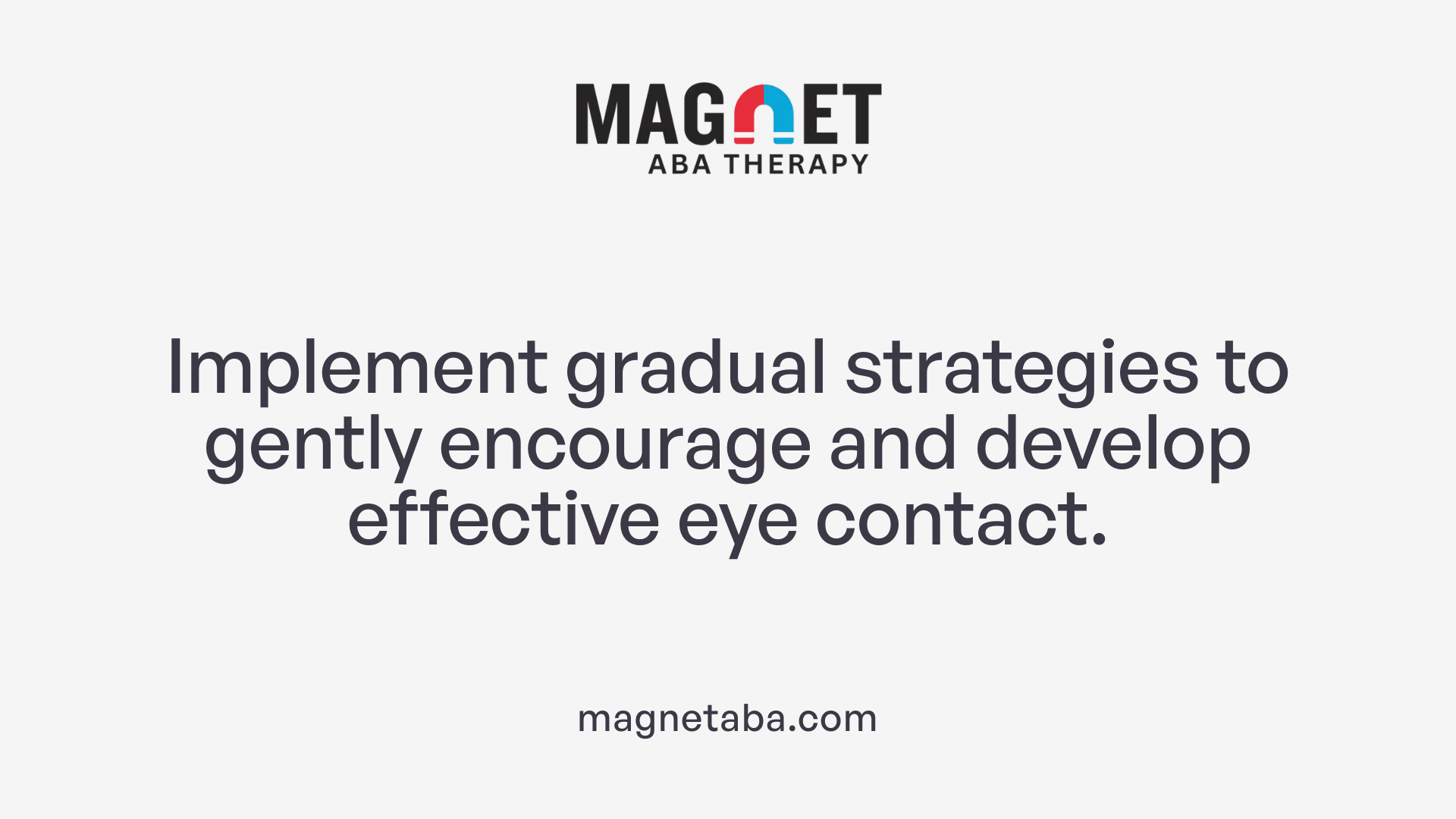 Building comfort and trust is essential when encouraging eye contact in therapy sessions. Therapists should create a safe, supportive environment by exploring clients' backgrounds, experiences, and fears related to eye contact. This understanding allows tailored approaches that respect individual boundaries.
Building comfort and trust is essential when encouraging eye contact in therapy sessions. Therapists should create a safe, supportive environment by exploring clients' backgrounds, experiences, and fears related to eye contact. This understanding allows tailored approaches that respect individual boundaries.
Gradual exposure is a highly effective strategy. Starting with small, manageable exercises—such as brief gaze periods during conversation—helps clients slowly build confidence. For example, therapists might begin by making eye contact for just a few seconds and gradually increasing the duration as the client becomes more comfortable.
Cultural norms and personal differences significantly influence eye contact practices. Some cultures consider direct eye contact to be respectful and engaging, while others view it as intrusive or confrontational. Therapists should be aware of these variations and adapt their techniques accordingly, respecting each client’s boundaries.
Incorporating nonverbal cues can enhance the connection without forcing direct eye contact. Techniques like head-nodding, facial expressions, and leaning forward show attentiveness and empathy. These cues complement verbal communication and reinforce rapport.
Positive reinforcement plays a crucial role in encouraging sustained eye contact. Using praise, rewards, or gentle prompting—especially in applied behavior analysis (ABA) therapy—can shape behaviors over time. Methods such as prompting and shaping gradually guide clients toward more consistent eye contact, reinforcing progress in a supportive manner.
| Practice Method | Description | Additional Notes |
|---|---|---|
| Gradual exposure | Slowly increasing eye contact duration over time | Helps build confidence without overwhelm |
| Modeling and prompting | Using prompts and careful modeling to guide behavior | Fades over time to foster independence |
| Reinforcement strategies | Rewards for maintaining appropriate eye contact | Includes verbal praise or tangible rewards |
| Cultural sensitivity | Adjusting techniques based on cultural norms | Ensures respectful and comfortable setting |
Employing these approaches, with patience and sensitivity, can foster better eye contact. It’s essential to recognize that for some individuals—such as those on the autism spectrum—eye contact may inherently be more challenging. Working with licensed therapists and utilizing techniques like cognitive-behavioral therapy (CBT) via online platforms can support personalized skill development.
In summary, establishing trust, implementing gradual exposure, respecting cultural differences, utilizing nonverbal cues, and reinforcing progress are integral to effectively fostering eye contact during therapy sessions. These practices help create a more engaging, empathetic, and respectful environment conducive to growth.
Measuring Progress in Developing Eye Contact Skills
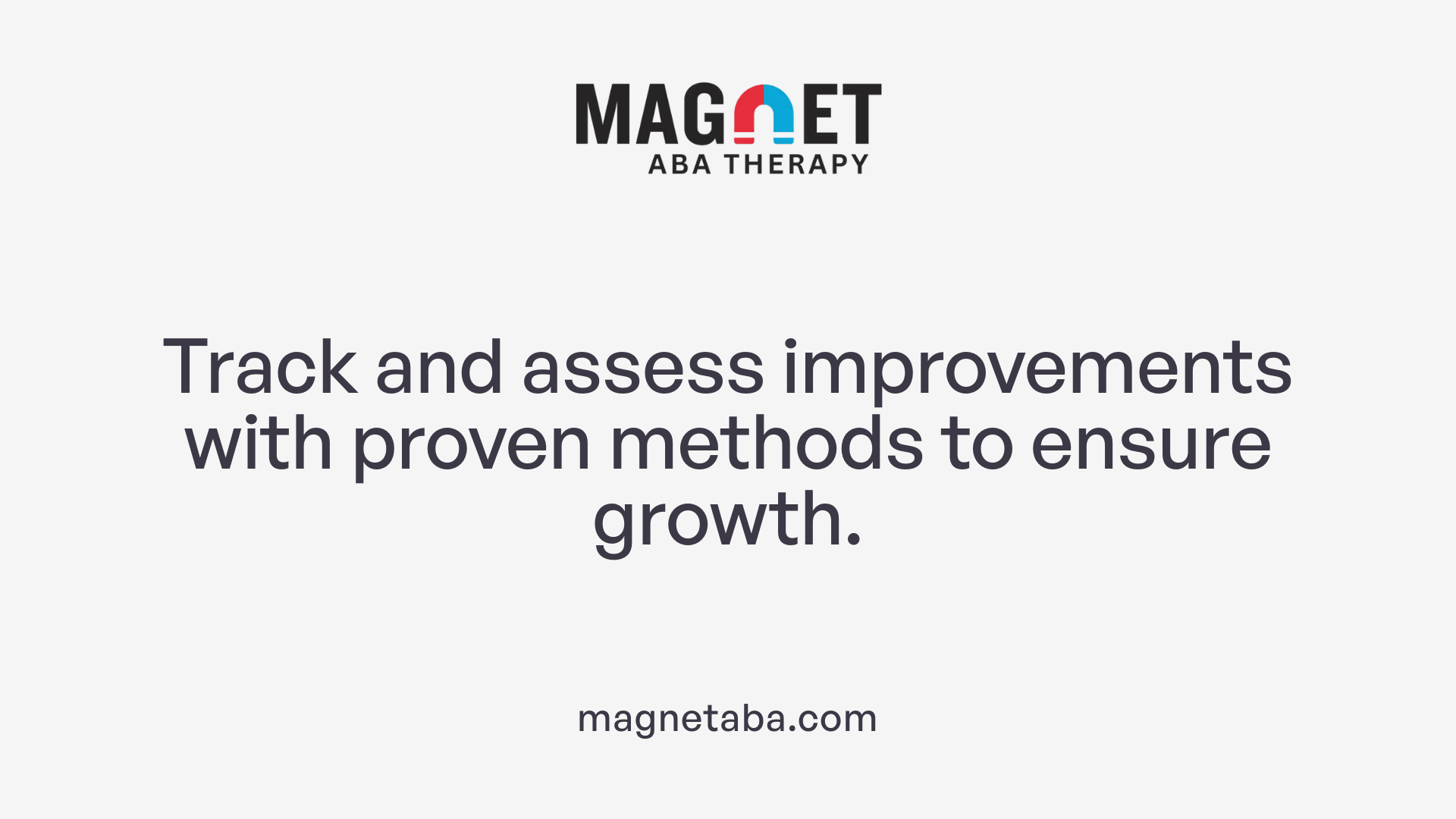 Tracking improvements in eye contact can be approached in several ways, combining both subjective and objective methods. Behavioral observations are commonly used by practitioners to monitor how often and how comfortably individuals make eye contact during interactions. These observations can be documented through behavior logs, checklists, or live notes taken during therapy sessions.
Tracking improvements in eye contact can be approached in several ways, combining both subjective and objective methods. Behavioral observations are commonly used by practitioners to monitor how often and how comfortably individuals make eye contact during interactions. These observations can be documented through behavior logs, checklists, or live notes taken during therapy sessions.
Self-report tools are also valuable, as individuals can share their perceptions and feelings about their eye contact progress. For example, clients may rate their comfort levels or confidence in maintaining eye contact over time, providing insight into their personal experience.
Video analysis is another popular technique, where recorded interactions are reviewed by clinicians or researchers. This allows for a detailed assessment of gaze duration, frequency, and quality of eye contact. Some studies even utilize eye-tracking technology, which can precisely measure where and for how long an individual looks at a face or specific facial features.
Data collection plays an essential role in this comprehensive process. Regularly gathering data enables practitioners to identify trends, set goals, and adjust interventions accordingly. For example, they may track the increase in eye contact duration from a baseline measurement, or observe reductions in avoidance behaviors.
All these methods—behavioral, self-report, video analysis, and data collection—work together to provide a rounded view of progress. This approach helps ensure that improvement in eye contact skills is both meaningful and measurable, supporting tailored strategies for each individual needing to strengthen this vital social skill.
Fostering Growth and Confidence in Eye Contact
Enhancing eye contact is an essential component of effective therapy, serving as a bridge to deeper understanding and connection. By applying tailored strategies such as gradual exposure, practicing active listening cues, and respecting individual and cultural differences, therapists can help clients build confidence and reduce discomfort associated with eye contact. Utilizing techniques in both in-person and virtual settings, along with ongoing assessment of progress, ensures a personalized approach that promotes social engagement, emotional safety, and trust. Ultimately, fostering better eye contact not only improves communication skills but also empowers clients to navigate social interactions with greater confidence and authenticity.
References
- Eye Contact in Therapy, Part I | Psychology Today
- How to Overcome Eye Contact Anxiety - Verywell Mind
- Improving counseling effectiveness with virtual counselors through ...
- How To Improve Your Eye Contact - BetterHelp
- 5 Strategies to Improve Your Eye Contact - UpSkill Specialists
- Ways to Improve Eye Contact and Speech - Autism Treatment Center
- Strategies to Encourage Eye Contact in ABA Therapy
- Another strategy to increase eye contact…
- Eye Contact in Therapy, Part I | Psychology Today



